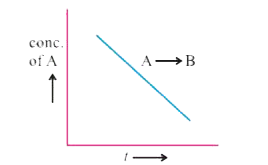The relation between the slope of isothemal curve and slope of adiabatic curve
slope of adiabatic curve =γ times slope of isotharmal curve
slope of isothermal curve =γ times slope of adiabatic curve
slope of adiabatic curve =γ2 times slope of isothermal curve
slope of isothermal curve =γ2 times slope of adiabatic curve
The correct Answer is:A
To find the relation between the slope of the isothermal curve and the slope of the adiabatic curve, we will analyze both processes step by step.
Step 1: Understand the Isothermal Process
The isothermal process is defined by the equation:
PV=nRT
where:
- P is the pressure,
- V is the volume,
- n is the number of moles,
- R is the universal gas constant,
- T is the absolute temperature (constant during the process).
Since T is constant, the product PV remains constant.
Step 2: Differentiate the Isothermal Equation
To find the slope of the isothermal curve, we differentiate the equation:
P=nRTV
Taking the derivative with respect to V:
dP=−nRTV2dV
Thus, the slope dPdV for the isothermal process is:
dPdV=−nRTV2
Step 3: Understand the Adiabatic Process
The adiabatic process is described by the equation:
PVγ=constant
where γ (gamma) is the heat capacity ratio CpCv.
Step 4: Differentiate the Adiabatic Equation
To find the slope of the adiabatic curve, we differentiate the equation:
P=CVγ
where C is a constant. Taking the derivative with respect to V:
dP=−γCVγ+1dV
Thus, the slope dPdV for the adiabatic process is:
dPdV=−γPV
Step 5: Relate the Slopes
Now we have the slopes for both processes:
- Isothermal slope: dPdV=−nRTV2
- Adiabatic slope: dPdV=−γPV
To find the relationship between the slopes, we can express the slope of the adiabatic curve in terms of the slope of the isothermal curve:
Slope of adiabatic=γ×Slope of isothermal
Conclusion
The relation between the slope of the isothermal curve and the slope of the adiabatic curve is:
Slope of adiabatic curve=γ×Slope of isothermal curve
The isothermal process is defined by the equation:
PV=nRT
where:
- P is the pressure,
- V is the volume,
- n is the number of moles,
- R is the universal gas constant,
- T is the absolute temperature (constant during the process).
To find the slope of the isothermal curve, we differentiate the equation:
P=nRTV
Taking the derivative with respect to V:
dP=−nRTV2dV
Thus, the slope dPdV for the isothermal process is:
dPdV=−nRTV2
The adiabatic process is described by the equation:
PVγ=constant
where γ (gamma) is the heat capacity ratio CpCv.
To find the slope of the adiabatic curve, we differentiate the equation:
P=CVγ
where C is a constant. Taking the derivative with respect to V:
dP=−γCVγ+1dV
Thus, the slope dPdV for the adiabatic process is:
dPdV=−γPV
Now we have the slopes for both processes:
- Isothermal slope: dPdV=−nRTV2
- Adiabatic slope: dPdV=−γPV
Slope of adiabatic=γ×Slope of isothermal
The relation between the slope of the isothermal curve and the slope of the adiabatic curve is:
Slope of adiabatic curve=γ×Slope of isothermal curve
Topper's Solved these Questions
- THERMODYNAMICSBOOK - NCERT FINGERTIPSCHAPTER - THERMODYNAMICSEXERCISE - Heat Engines
4 Videos
- THERMODYNAMICSBOOK - NCERT FINGERTIPSCHAPTER - THERMODYNAMICSEXERCISE - Refrigerators And Heat Pumps
10 Videos
- THERMODYNAMICSBOOK - NCERT FINGERTIPSCHAPTER - THERMODYNAMICSEXERCISE - Thermodynamic State Variables
2 Videos
- THERMAL PROPERTIES OF MATTERBOOK - NCERT FINGERTIPSCHAPTER - THERMAL PROPERTIES OF MATTEREXERCISE - Assertion And Reason
10 Videos
- UNITS AND MEASUREMENTSBOOK - NCERT FINGERTIPSCHAPTER - UNITS AND MEASUREMENTSEXERCISE - Assertion And Reason
15 Videos
Similar Questions
Knowledge Check
The relation between the slope of isothermal curve and slope of adiabatic curve is
Aslope of adiabatic curve =γ times slope of isothermal curveBslope of isothermal curve =γ times slope of adiabatic curveCslope of adiabatic curve =γ2 times slope of isothermal curveDslope of isothermal curve =γ2 times slope of adiabatic curveThe slope of isothermal and adiabatic curves are related as
Aisothermal curve slope = adiabatic curve slopeBisothermal curve slope = γ×adiabatic slopeCadiabatic curve slope = γ× isothermal slopeDadiabatic curve slope = (1/2) × isothermal curve slopeIf the slope for isotherm is X and the slope for adiabat is Y then
AX=γYBY=γXCX=YDXγ=Y
The equation of the normal to the curve y2=4ax having slope m
View SolutionThe ratio of slopes of adiabatic and isothermal curves is
View SolutionThe slope of demand curve is generally :
View SolutionA gas may expand either adiabatically or isothermally. A number of p−V curves are drawn for the two processes over different ranges of pressure and volume, it will be found that
(i) Two adiabatic curves do not intersect
(ii) two isothermal curves do not intersect
(iii) an adiabatic curve and an isothermal curve may intersect.
(iv) the magnitude of the slope of an adiabatic curve is greater thanthe magnitude of the slope of an isothermal curve
View SolutionIn a p-V diagram for an ideal gas (Where , p is along y-axis and V is along X- axis) , the value of the ratio "slope pof adiabatic curve/ Slope of the isothermal curve"at any point will be (Where symbols have their usual meanings ).
View Solution

